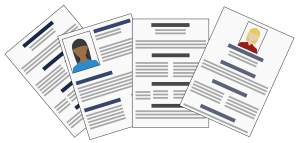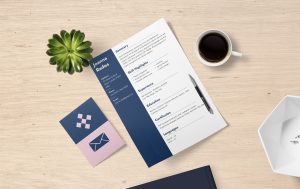How Many Pages Should Your Resume Be?
A well-crafted resume is an essential tool for job seekers, presenting their skills, qualifications, and experiences to potential employers. While the content and formatting of a resume are crucial, the length of the document often sparks a debate among job applicants. The question of how many pages a resume should be is a common concern. In this article, we will explore this topic and provide guidance on determining the ideal length for your resume.
The Traditional One-Page Resume: For many years, the one-page resume has been the standard format recommended by career experts. This concise document allows hiring managers to quickly review an applicant’s key qualifications, work experience, and relevant skills. One-page resumes are particularly suitable for entry-level positions or professionals with limited work experience. They emphasize brevity and focus on the most impactful information, making it easier for recruiters to scan and assess a candidate’s potential.
The Two-Page Resume: As the job market evolves and becomes more competitive, professionals with more extensive experience may find it challenging to fit their accomplishments onto a single page. In such cases, a two-page resume is a viable option. This format provides additional space to showcase a broader range of skills, accomplishments, and relevant projects. However, it is important to remember that quality is more important than quantity. A two-page resume should still be concise, well-organized, and targeted towards the desired position.
Factors Influencing Resume Length: While there are general guidelines for resume length, certain factors can influence whether a one-page or two-page resume is more appropriate:
- Work Experience: Applicants with multiple years of relevant experience may require more space to effectively present their career trajectory and accomplishments. Each position should be described concisely but with enough detail to highlight key achievements. Industry and Job Level: Industries that value detailed portfolios, such as design or academia, may benefit from a longer resume. Similarly, senior-level professionals or those in executive positions often have complex roles that necessitate a comprehensive overview of their expertise.
- Targeted Relevance: Tailoring your resume to specific job requirements allows you to emphasize relevant skills and experiences. Including only pertinent information will help you keep your resume concise, regardless of its length.
- Be Mindful of the Reader: Recruiters and hiring managers often receive numerous resumes for each job opening. Their time is limited, and they prefer documents that are easy to navigate and digest. Regardless of the length you choose, it is crucial to make your resume visually appealing and well-structured. Use bullet points, headings, and subheadings to enhance readability and draw attention to the most critical details.
Final Tips: To effectively manage your resume length, consider the following tips:
- Prioritize: Highlight your most relevant experiences and skills that align with the job requirements. Focus on achievements that demonstrate your ability to succeed in the desired role.
- Edit Ruthlessly: Review your resume carefully and eliminate any redundant or irrelevant information. Use concise language and remove unnecessary details.
- Use White Space: A well-formatted resume with ample white space can enhance readability and make a positive visual impact. Avoid cluttering the page with excessive text.
Conclusion: Determining the ideal length for a resume depends on various factors, including work experience, industry, and job level. While a one-page resume remains the norm for many entry-level positions, professionals with more extensive backgrounds can consider a two-page format. Ultimately, the key is to create a concise, well-structured, and targeted document that effectively highlights your qualifications and captures the attention of potential employers.





